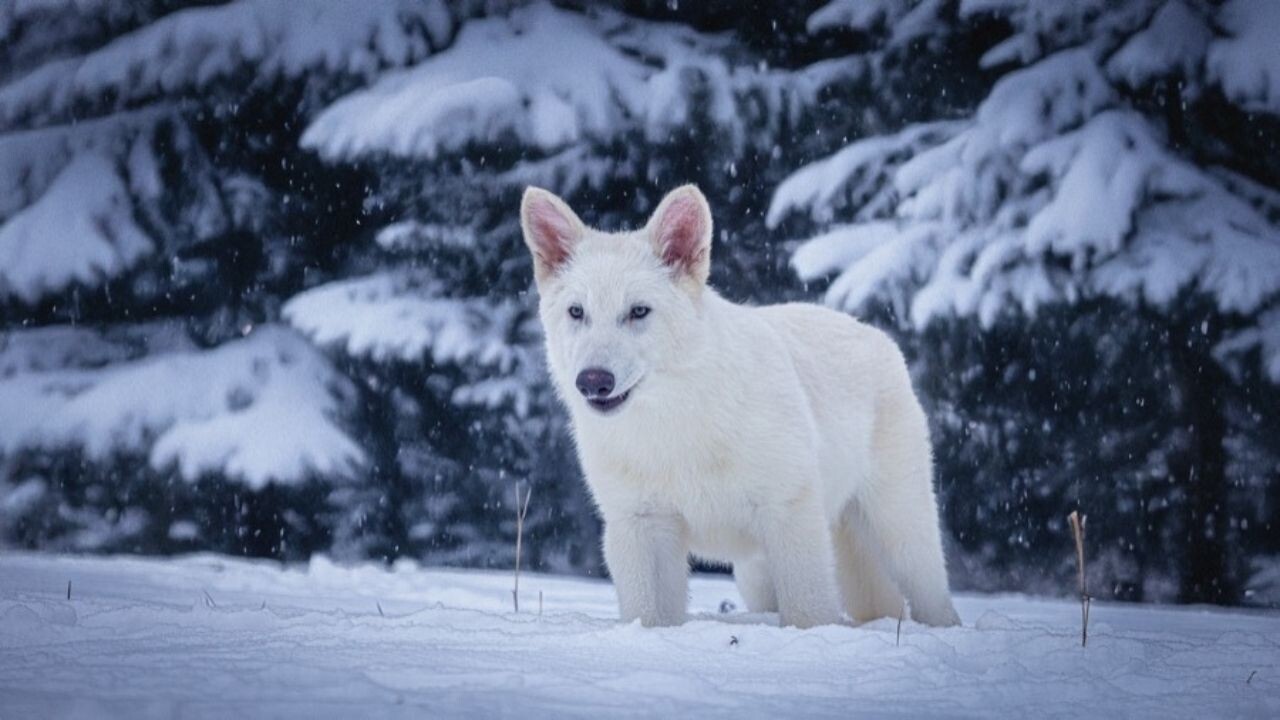
US biotech startup Colossal Biosciences has resurrected the dire wolf — or at least that’s what the company would like you to believe.
Social media is abuzz with viral videos, memes, and images of fluffy white wolf puppies. The Game of Thrones references are — predictably — omnipresent. The news even made it to Time magazine’s latest cover.
But behind the hype lies a dangerous de-extinction delusion that could distract from proven solutions to the biodiversity crisis. The Trump administration is already using Colossal’s claims as an excuse to slash endangered species protections.
First, let’s set something straight — Colossal didn’t bring back the dire wolf. It took DNA from ancient dire wolves’ remains and then edited a handful of those genes into the genomes of modern grey wolves to give them larger bodies, broader skulls, and specific coat colours. It’s an impressive feat of tech-wizardry, but these fluffy white cubs are, at best, mutations.
George R.R. Martin holds the first new dire wolf born in 10,000 years pic.twitter.com/5JPepJK8k1
— Winter is Coming (@WiCnet) April 8, 2025
Colossal claims it has “successfully restored a once-eradicated species through the science of de-extinction” for the “first time in human history”. That’s factually incorrect, as many scientists have already pointed out.
As University of Maine paleoecologist Jacquelyn Gill wrote on Bluesky on Monday, “To see this work being done with such a casual disregard not only for the truth but for life itself is genuinely abhorrent to me.”
But Colossal shows no signs of slowing down. Last month, the $10bn company used a similar technique to create a wooly mouse — a rodent genetically engineered to have mammoth-like pelts. In the future, Colossal plans to “resurrect” other extinct creatures, including the dodo, Tasmanian tiger, and the giant mammoth.
The company says that these projects serve as proof of concepts for de-extinction technologies, which could aid in bringing back lost species and restoring ecological balance. It’s the flagbearer of a growing de-extinction movement in the US, joined by organisations like Revive & Restore and Re:Wild.
Europe, in contrast, has focused its rewilding efforts more on bringing back existing species, like bison, wolves, and beavers, to regions where they were hunted to extinction.

Meanwhile, an emerging cohort of biodiversity-focused startups is tapping tech to restore nature in more sane ways. For instance, Stream Ocean from Switzerland has developed a face recognition technology for fish that helps scientists monitor species numbers. Germany’s Soilytix tracks soil health using environmental DNA, while UK startup Pivotal Earth connects corporate funding to credited conservation projects.
This is where technology can find its use in biodiversity restoration, not in Frankensteinian conservation attempts, which aren’t just over-hyped but present a dangerous distraction from proven measures.
Colossal has broadcast the message that extinction is reversible — but it is not.
While the public fawns over adorable mutated “dire wolves” on Instagram, biodiversity loss is snowballing. One million (known) species are threatened with extinction, with extinction rates now occurring up to 1,000 times the rate pre-humans.
We need to mobilise resources to protect the species that we still have left, like the Iberian wolf. Once widespread, the canid is now confined to mountainous regions of Portugal and Spain. Only around 2,200 individuals remain.
Humanity’s top priority should be to safeguard existing biodiversity and restore what’s been damaged. Instead of playing God with long-extinct creatures, we must fight for the endangered species we still have left.
Get the TNW newsletter
Get the most important tech news in your inbox each week.





